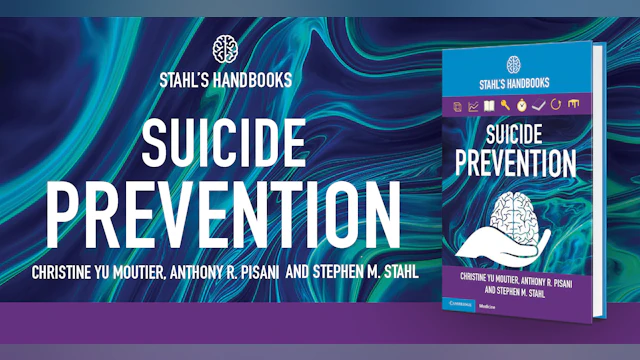This piece originally appeared on fifteeneightyfour, the blog of Cambridge University Press
When I became chief medical officer of the American Foundation for Suicide Prevention (AFSP) eight years ago, after treating people with severe mental illness, teaching, and then co-leading a suicide prevention program for medical faculty, residents and students in my role as a dean in the University of California, San Diego medical school, I was nevertheless surprised to learn the wealth of new, science-based information that had quietly been emerging through the work of the suicide research field. I also came to realize that most healthcare systems had not been designed with mental health in mind, let alone with suicide prevention as a clinical and quality improvement focus.
Although I had gone on to develop an interest in suicide prevention, my experience in medical school had been typical: I’d had no coursework devoted to suicide prevention and only an hour didactic on suicide risk assessment during my psychiatry residency 25 years ago. I trained and practiced in a world where we were reacting rather than proactively managing suicide risk. At AFSP, I was delighted to discover the suicide prevention field had been rapidly evolving related to suicide focused interventions based on exciting scientific research in many disciplines from neuroscience to clinical interventions to population and community-based efforts. I learned that out of all the data-driven strategies evaluated for the purpose of AFSP’s Project 2025 goal of reducing the national suicide rate 20% by 2025, the greatest potential to save the most lives lay in the delivery of healthcare – not limited to mental health professionals, but across the healthcare continuum, to include primary care, emergency medicine and behavioral healthcare.
I came to understand that reducing the risk of suicidal behavior is, in fact, possible. This does not mean that all instances of suicide can be prevented, nor that we need to be able to predict suicidal behavior. But in the same way that cardiologists approach heart disease mortality, preventing suicide requires a well-honed, systems-based strategy that promotes protective factors, identifies modifiable risk factors, and aggressively reduces their negative impact to every extent possible. It became apparent to me, as I adapted my new knowledge of suicide prevention to my experience within the world of healthcare, that there were procedures and best practices that could be implemented within healthcare systems to reduce suffering and the rate of suicide, which is currently the tenth leading cause of death in the U.S.
For these reasons, Dr. Stephen Stahl, Dr. Anthony Pisani and I– having identified a gap in clinicians’ armamentarium of resources – decided it was the right time to create a clinical handbook for healthcare providers, focused on suicide prevention. The current suicide prevention texts contain solid information but aren’t necessarily designed for in-the-moment clinical care that we have for other clinical conditions, and not in the digestible format of the Cambridge Stahl’s Handbook series. So, for our Suicide Prevention Stahl’s Handbook, Steve, Tony and I set out to distill the most current science and best practices into a format that can be used during the busy clinician’s day. We also wanted to balance those quick bite-size clinical pearls with enough background to address some of the harder questions related to suicide. It is important to us that all healthcare professionals, not just those in mental health disciplines, are invited and equipped for the work to create a suicide preventive safety net for those who are at risk.
Our Suicide Prevention Clinical Handbook contains 3 main parts: 1) An overview that busts the prevailing myths about suicide and distills the most up-to-date science into one model that incorporates the complex interaction between various human factors which drive suicide risk, and also presents suicide prevention in a clear public health framework; 2) A clinical care pathway starting with screening and assessment, that builds on older models of static risk stratification, towards a practical, dynamic assessment that includes the patient’s present situation and likely scenarios and provides best practice steps; and 3) Practical topics including medicolegal risk management, and a discussion of key populations.
This handbook has some timely features as well, including clinical care in the virtual/telemedicine environment, approaches with marginalized groups, and ways to address health disparities and cultural gaps. Treatment for preventing suicide has seen major advances in recent years and all of these – from brief interventions such as Safety Planning and lethal means counseling, to medications, to specific evidence-based suicide risk reducing psychosocial interventions – are discussed. Case examples are provided, along with the much-needed perspectives of people with lived experience and loss. Other relevant issues such as prevention versus prediction, substance use, social media, non-suicidal self-harm, and suicide contagion are all covered. Lastly, the book discusses caring for patients who are suicide loss survivors, as well as the profound impact having a patient die by suicide can have on a clinician.
We know first-hand the challenges of caring for patients whose suicide risk is obvious, as well as for patients whose risk for suicide only became clear in hindsight. Know that we are all connected in these challenges and are all learning more every day. We hope this guide serves you and your patients well.

